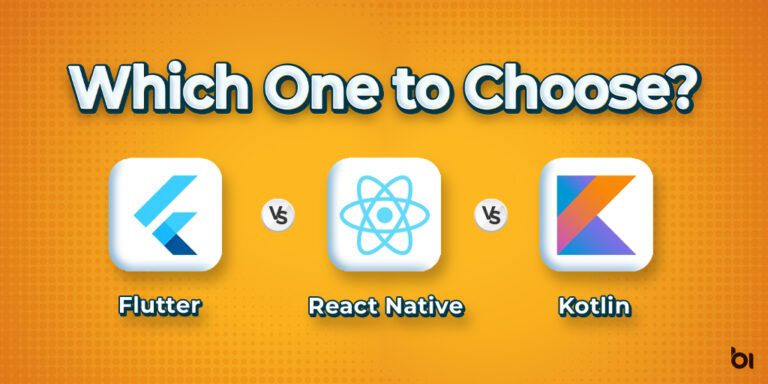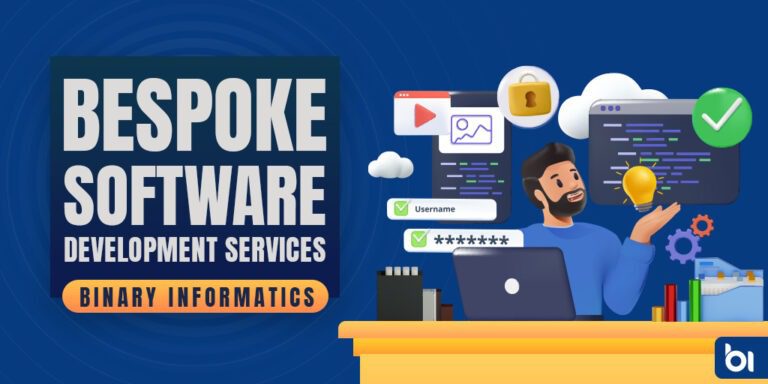The COVID-19 pandemic highlighted the significant importance of mobile applications in our lives.
Table of Contents
ToggleAs the demand for mobile apps increased, the technologies associated with them experienced significant advancements.
According to Statista, consumers downloaded 255 billion mobile apps onto their devices in the most recent measurement year, marking an 80% increase from the 140.7 billion app downloads in 2016.
In this comprehensive guide, we will compare Flutter vs React Native vs Kotlin, three powerful cross-platform app development frameworks. Our goal is to help you make an informed decision when choosing the right framework for your next project.
Table of Contents
- Introduction to Cross-Platform App Development
- Flutter: A UI Toolkit for Natively Compiled Applications
- React Native: Build Native Apps Using React
- Kotlin Multiplatform Mobile: Sharing Code Across Platforms
- Comparing Flutter, React Native, and Kotlin: Key Factors to Consider
- Making the Right Choice for Your Project
- Conclusion
Introduction to Cross-Platform App Development
Cross-platform app development enables developers to write code once and run it on multiple platforms, such as iOS and Android. This approach saves time, and resources, and reduces the need for platform-specific expertise.
Flutter: A UI Toolkit for Natively Compiled Applications
Flutter is an open-source UI toolkit developed by Google, designed to build natively compiled applications for mobile, web, and desktop.
Key Features of Flutter
- Fast Development: Flutter’s hot-reload feature allows developers to see changes in real time without losing the app’s state.
- Rich, Customizable Widgets: Flutter offers a vast library of pre-built, customizable widgets that can be easily combined to create complex UIs.
- Single Codebase: Write code once and run it on both iOS and Android platforms.
- Dart Language: Flutter uses the Dart programming language, which is easy to learn and supports powerful features like async/awaits and type safety.
Pros and Cons of Flutter
Pros:
- Excellent performance due to native compilation.
- A growing community and extensive documentation.
- Strong support from Google.
Cons:
- Relatively young compared to other frameworks.
- Limited support for third-party libraries.
React Native: Build Native Apps Using React
React Native is an open-source framework created by Facebook for building native mobile applications using React, a popular JavaScript library for building user interfaces.
Key Features of React Native
- React Ecosystem: React Native leverages the vast React ecosystem, giving developers access to numerous libraries and tools.
- Fast Development Cycle: Like Flutter, React Native supports hot-reloading, enabling real-time changes without losing app state.
- Native Modules: React Native allows developers to write native code in Objective-C, Swift, or Java when necessary, providing flexibility and performance optimization.
- Large Community: React Native has a massive, active community, ensuring support and frequent updates.
Pros and Cons of React Native
Pros:
- Mature and widely used, with a large community.
- Access to the React ecosystem.
- Integration with native modules for performance optimization.
Cons:
- Performance may suffer compared to native apps.
- Can require platform-specific knowledge in some cases.
Kotlin Multiplatform Mobile: Sharing Code Across Platforms
Kotlin Multiplatform Mobile (KMM) is a framework that enables developers to share code between iOS and Android platforms, while still leveraging the native capabilities of each platform.
Key Features of Kotlin Multiplatform Mobile
- Code Sharing: KMM allows Sharing of common logic between iOS and Android while retaining platform-specific code when necessary.
- Kotlin Language: Kotlin is a modern, expressive, and type-safe language that is easy to learn and has strong support from JetBrains and Google.
- Native Performance: KMM compiles code to platform-specific binaries, ensuring optimal performance.
- Interoperability: KMM can interoperate with Swift on iOS and Java on Android, allowing seamless integration with existing projects.
Pros and Cons of Kotlin Multiplatform Mobile
Pros:
- Leverages the power of Kotlin and its extensive ecosystem.
- Optimal performance due to native compilation.
- Compatibility with existing native projects.
Cons:
- Relatively new and not as widely adopted as other frameworks.
- Limited support for UI code sharing.
Comparing Flutter vs React Native vs Kotlin: Key Factors to Consider
In this section, we will compare Flutter, React Native, and Kotlin Multiplatform Mobile across several key factors to help you make the right choice for your project.
Performance
Flutter and Kotlin Multiplatform Mobile offer native-level performance due to their ability to compile to platform-specific binaries. React Native, on the other hand, may suffer performance issues compared to native apps, especially in complex scenarios.
Ecosystem and Community
React Native has the largest community and ecosystem, followed by Flutter, which is backed by Google and has a rapidly growing community. Kotlin Multiplatform Mobile, although supported by JetBrains and Google, is relatively new and has a smaller community.
Language and Learning Curve
Flutter uses Dart, a modern and easy-to-learn language, while React Native relies on the popular JavaScript and React library. Kotlin Multiplatform Mobile leverages Kotlin, a powerful and expressive language that is gaining popularity among developers.
Code Sharing and Flexibility
All three frameworks offer the ability to share code between platforms, with Kotlin Multiplatform Mobile providing the most flexibility when it comes to incorporating platform-specific code. React Native and Flutter, however, have more extensive UI code sharing capabilities.
Making the Right Choice for Your Project (Flutter vs React Native vs Kotlin)
To choose the best framework for your project, consider the following questions:
What is your project’s performance requirement?
If you need the highest performance, consider Flutter or Kotlin Multiplatform Mobile.
How important is UI code sharing?
For extensive UI code sharing, Flutter or React Native are better options.
Do you need access to a large ecosystem and community?
React Native has the largest community, while Flutter is rapidly growing.
What is your team’s familiarity with the languages?
Choose the framework that aligns with your team’s expertise in Dart, JavaScript, or Kotlin.
Conclusion
In conclusion, Flutter, React Native, and Kotlin Multiplatform Mobile offer unique advantages for cross-platform app development. Each framework has its strengths and weaknesses, and your choice should be based on your project’s specific requirements, your team’s expertise, and the desired level of performance, flexibility, and community support.
React Native is a good choice for developers who want to build cross-platform apps with a large community of developers and open-source libraries. Kotlin is a good choice for developers who want to build high-performance Android apps with concise and efficient code.
Overall, each framework has its own strengths and weaknesses, and the choice ultimately depends on the specific needs of the project. It is important to carefully consider the requirements and constraints of the project and choose the framework that best meets those needs.
At the end of the day, the success of a mobile app depends not only on the choice of framework but also on the quality of the code and the overall user experience. Therefore, it is important to hire experienced developers who can build high-quality apps that meet the requirements of the project.




